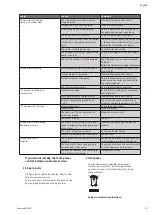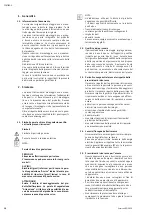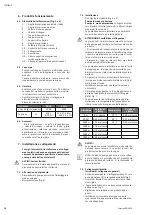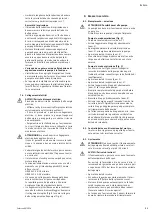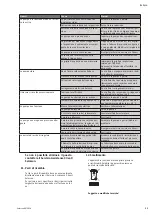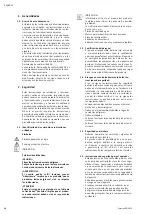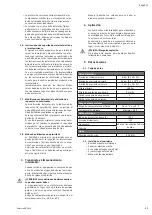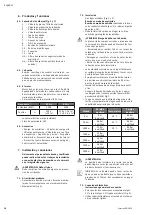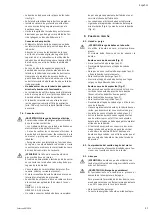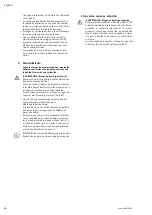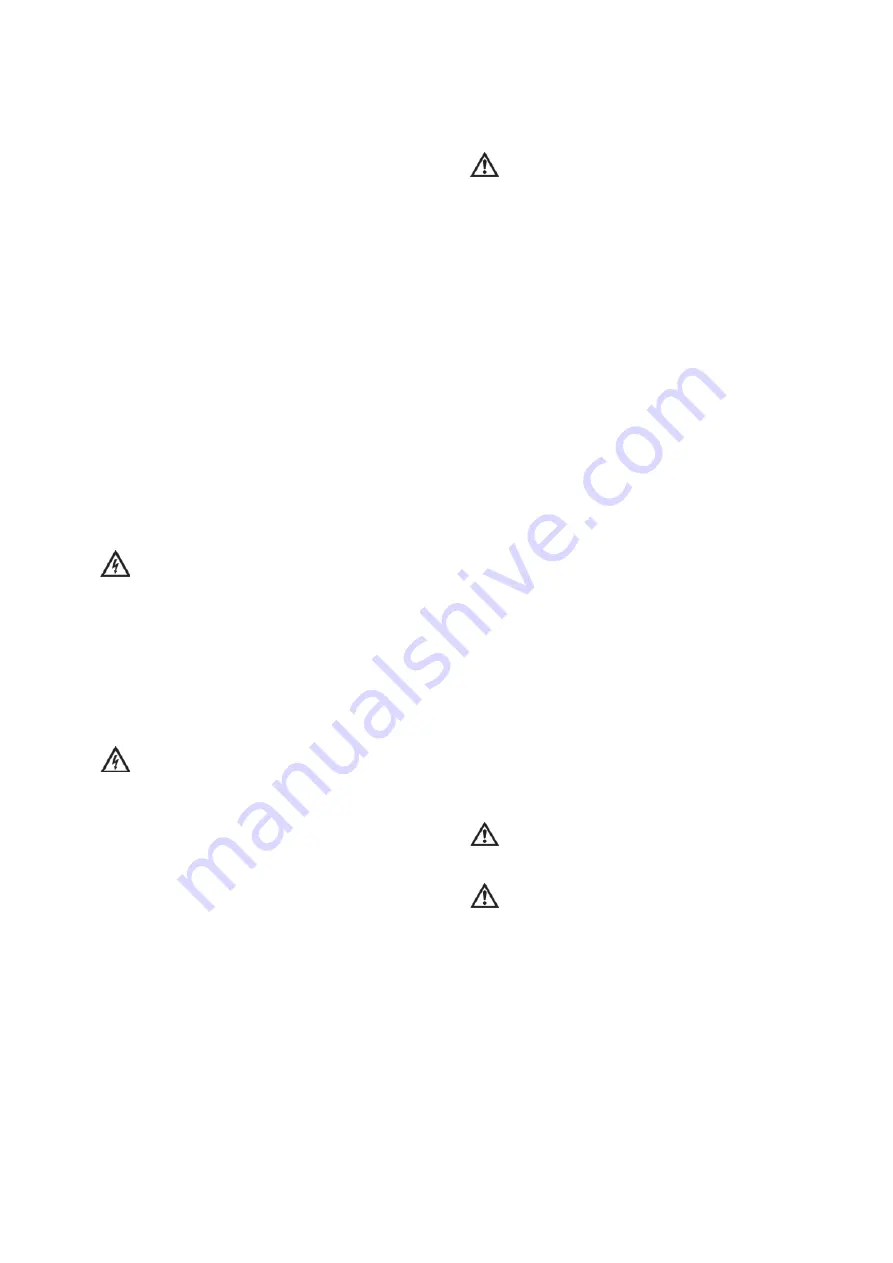
15
English
tures that cause friction loss (tapers, elbows,
buckling etc.).
Suction connections
• The diameter of the suction pipe must never be
less than the port on the pump.
Furthermore, for pumps of the series 4 m³/h
which have negative suction head (HA) greater
than 6 m, we recommend piping of a diameter
greater than the nominal diameter (DN) of the
pump in order to limit friction loss.
• In the case of negative suction head, the pump
must be the highest point of the installation and
the suction piping must always be on a rising
gradient from the extraction point to the pump,
in order to prevent air bubbles forming in the
suction pipe.
•
Air must not be allowed to enter the suction
piping while the pump is in operation.
• Installing a suction strainer (max. cross-section
of holes: 2 mm) prevents damage to the pump
from the intake of particles.
• If the pump is installed with negative suction
head: submerge the suction strainer (min. 700
mm). Ballast the flexible hose piping if necessary.
7.4 Electrical connection
WARNING! Risk of electric shock!
Danger from electrical current must be eliminat-
ed.
• Have all electrical work carried out by a qualified
electrician only!
• Before any electrical connection is made, the
pump must be de-energised (switched off) and
protected against unauthorised restarting.
• To ensure safe installation and operation, the
unit must be earthed correctly with the earth ter-
minals of the power supply.
CAUTION! An error in the electrical connection
will damage the motor.
The power cable must never touch the piping
or the pump, and must be kept away from any
moisture.
• See the motor’s rating plate for its electrical
characteristics (frequency, voltage, current).
• The single-phase motor of this pump has an
integrated motor protection switch.
• Power supply: use a cable conforming with appli-
cable standards (3 cores: 2 earth):
H05RN-F 3 G 1.5 minimum
H05RN-F 3 G 2.5 maximum
• A damaged cable or connector must be replaced
by the corresponding part available from the
manufacturer or the manufacturer’s customer
service.
• The electrical connections must be established
by following the assembly diagram for the quick
connector (Fig. 8) and connecting it to the pump
(Fig. 6).
8. Commissioning
8.1 Filling – venting
CAUTION! Risk of damage to the pump.
Never operate the pump dry, even briefly.
The system must be filled before starting the
pump.
Pump in inlet mode (Fig. 3)
• Close the discharge valve (item 3).
• Unscrew the priming plug slightly (item 5).
• Gradually open the suction valve (item 2) and
completely fill the pump.
• Open the discharge valve (item 3).
• Do not close the priming plug until water flows
out and all air has been released.
Pump in suction mode (Fig. 2)
• Make sure that all the accessories connected to
the pump pressure connection are open (taps,
valves, watering hose nozzles).
• Open the discharge valve (item 3).
• Open the suction valve (item 2).
• Unscrew the priming plug (item 5) on the pump
housing.
• Completely fill the pump and the suction pipe,
which must be fitted with a foot valve.
• Screw back in the priming plug (item 5).
• Activate the pump for a few seconds using the
on/off switch. After stopping it again, unscrew
the plug and add water to finish completely fill-
ing the pump.
• If the suction head is greater than 6 m, hold the
pressure pipe in a vertical position to a height
of at least 500 mm until the pump is primed, in
order to prevent the water from escaping from
the pump through the pressure pipe.
8.2 Checking the direction of rotation of the motor
The single-phase motors are designed to function
in the correct direction of rotation.
8.3 Starting
CAUTION! The pump must not operate at zero
flow (discharge valve closed) for more than 10
minutes.
WARNING! Risk of burns!
Zero flow operation causes the water tempera-
ture to rise.
To prevent formation of an air pocket, we rec-
ommend ensuring a minimum flow equal to or
greater than about 15% of the rated flow rate of
the pump.
• Open the discharge valve.
• Switch on power to the pump and start it up by
pressing the on/off switch (the indicator light will
switch on).
• In the case of a self-priming pump, if the suction
pipe has not been filled completely, starting may
take a few minutes (keep the discharge valve
open).
Salmson 09/2016
Summary of Contents for Claris home
Page 2: ...Fig 1 Fig 3 Fig 2 1 2 5 3 7 6 7 11 12 11 12 8 2 4 9 10 2 6 5 7 3 7 4 11 12 11 12 ٥ ...
Page 3: ...Fig 4 Fig 6 Fig 8 Fig 5 Fig 7 2 3 5 6 4 1 1 2 ...
Page 4: ...Fig 1 11 11 12 Fig 9 ...
Page 30: ......
Page 34: ...34 Notes ...
Page 35: ...35 Notes ...

















